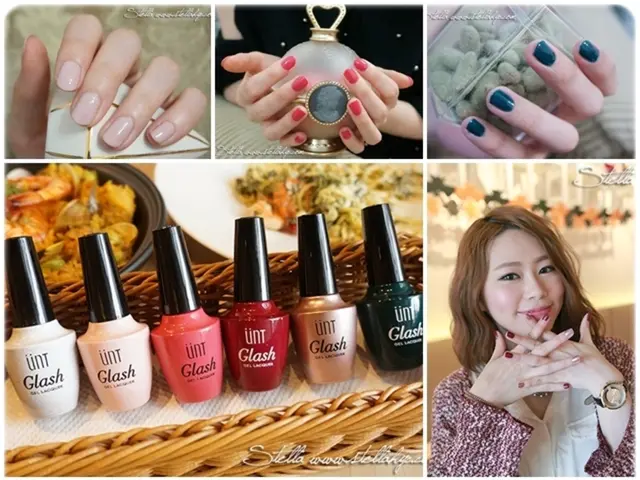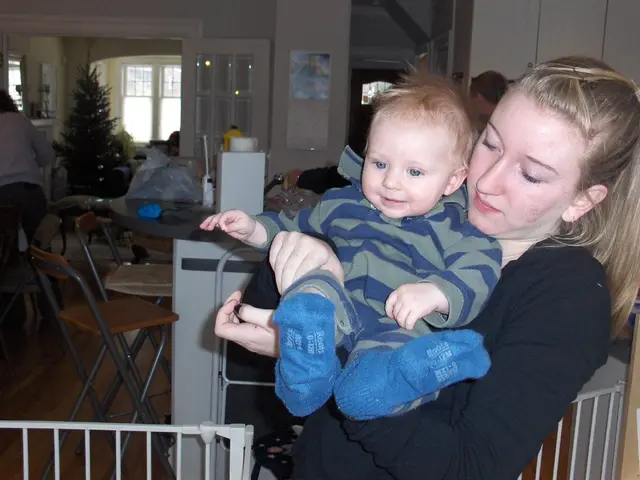Mending Avoidant Bonding: Crucial Strategies in 4 Key Steps
Transformed Article:
Healin' from dat avoidant attitude is a journey of rediscoverin' the spontaneity, curiosity, and joy that come with emotional openness. It's all about stepping back into the vulnerable space of emotional engagement without fear of losin' oneself.
We all think dat avoidant partners just need "space." But really, "space" ain't a safe spot in a storm. It's more like runnin' from a tornado. Believe it or not, dat's NOT the best thing to do in a tornado; instead, you're supposed to get out of your car and hunker down, gettin' close to the ground, and let it pass over you.
Here's the deal:
Feelings vs. fears—it's like a seesaw. When fears rise, emotional availability drops for the avoidant partner.
But why?
Childhood emotional neglect plays a huge role here. Imagine growin' up where your emotional needs are consistently overlooked or overridden. This can create a protective shell around one's heart and lead to pullin' away just when things get real.
Now picture this: a world where every emotional cue from a partner is met with openness, not withdrawal.
Sounds ideal, right? But when we cling to the myth that "avoidants just need space," we end up enabling patterns that sever the ties that could lead to deeper intimacy. And then, they tend to spin around and around inside their own, personal tornado.
If you got an avoidant partner, you need to do more than just give space; you need to understand the dance between feelings and fears and approach it with a compassionate understanding of what's needed for growth, 'n how you can help 'em along.
If you got dat avoidant attitude thang goin' on, it's time for ya to start tearin' down those impenetrable walls by understandin' the roots of your avoidant behaviors and learnin' how to create your own emotional safety, through the power of true emotional FREEDOM and discipline.
We're gonna delve into four important steps in this guide. Glady ya joined us for this segment.
Also, be sure to share this with a friend if it gave you any light bulb moments. If you'd like to learn more about the basics of avoidant attachment, check out my video, 4 Strengths of The Rolling Stone.
Step 1: Healin' Avoidant Attachment with Playfulness and Creativity
Why it's important to rediscover playfulness and creativity:
Avoidant individuals often developed their attitude through a pattern of emotional neglect, dismissal, punishment, or manipulation. These external restrictions lead to internal emotional and energetic constrictions in the body, messin' with the capacity to freely play, move around, explore, and find enjoyment in discovery and fun interactions. This is crucial during youth, doncha know—if it ain't properly fostered, it can mess up adult relationships.
Why avoidant partners struggle to play in adult relationships:
- Emotional rigidity: Avoidant folk might find it hard to adapt to changes or be emotionally flexible.
- Anxiety: There's usually a feelin' of nervousness or unease, especially in emotionally intimate situations.
- Hyper-controlling behavior: An intense desire to control situations or people to manage emotional discomfort.
- Perfectionism: An excessive need to meet impossibly high standards, usually to avoid criticism or perceived failure.
- Aloofness and detachment: Keeping emotional distance in relationships to avoid vulnerability.
- Disconnection from emotions or the body: A lack of awareness or avoidance of emotional or physical sensations.
- Too loose or too rigid boundaries: Either a lack of clear boundaries or bein' overly rigid to protect oneself.
- Punitive inner voice and critic: Harsh self-criticism that prevents emotional exploration or vulnerability.
What healin' avoidant attachment style looks like:
- Laugh together: Share laughs 'n relieve stress.
- Be spontaneous: Enjoy unexpected moments 'n surprises together.
- Experiment: Try new things to enhance the relationship's excitement 'n depth.
- Be vulnerable: Play helps break down barriers, allowin' for emotional openness.
- Uplift each other: Playful interactions can brighten each other's day 'n strengthen the emotional bond.
- Share joy: Celebrate small moments together, strengthenin' the relationship.
The first step in healin' avoidant attachment involves reconnectin' with your playful, curious self—the way kids do. This process is about rediscoverin' the joy and creativity that allows for a more flexible approach to life and relationships. When we engage with the world playfully, we begin to break down the rigid and fearful patterns of thinkin' that keep us detached from our emotions 'n our bodies. This ain't mean to sound all fluffy, but when we're playful, it helps in softenin' the defensive barriers we've built around our hearts.
In my work as an art therapist, we use things like scribble drawings, metaphors, storytellin', 'n imaginal dialogues to help people, like you, rediscover their inner child. To learn more, check out my playlist, called "Healin' the Inner Child."
Step 2: Developin' Self-Trust to Heal Avoidant Attachment Style
Why do avoidant partners need to develop self-trust? Don't they not trust you?
Avoidant individuals don't trust you because they don't trust themselves to remain resilient, emotionally strong, 'n boundaried around others. What they're steerin' clear of? They're avoidin' the internal experience of anxiety 'n discomfort that comes up when someone makes an emotional request or demand, which creates a powerful urge to oblige. This compulsion is so strong that it can make ya feel like ya're losin' your 'true self,' slippin' away, no longer havin' free will. And that's why avoidant attachment is marked by a feelin' of bein' "smothered," with personal freedom valued above all else.
Before earnin' that deep-felt self-trust, avoidant folk typically display rigid, but fragile boundaries. They's hypersensitive, black-'n-white thinkin', 'n passive-aggressive approaches to conflict, which is evidence of this. The resulting behaviors are called "avoidant deactivation strategies"—which are strategies that shut down connection, to keep 'em safe.
Avoidant deactivating strategies:
- Stonewallin': Withdrawin' from conversations 'n situations that feel threatening, leavin' issues unresolved.
- Black-'n-white thinkin': Seein' things as all or nothin', leadin' to extreme reactions 'n difficulty compromisin'.
- Dismissiveness: Ignorin' or downplayin' the feelings 'n needs of partners, creatin' emotional distance.
- Passive-aggressive comments: Expressin' dissatisfaction or resentment through sarcasm or silent treatment.
- Hypersensitivity to criticism: Reactin' strongly to any perceived criticism, 'cause it's a threat to their sense of self.
- Rigid boundaries: Setten' firm lines to protect themselves, which makes deep emotional connections hard.
As avoidant partners begin to embrace their playful 'n creative sides, they naturally start to develop a stronger sense of self-trust. They's learnin' how to "co-regulate." What's that, you ask? Co-regulation is essential to buildin' that deep-felt self-trust, 'cause it means no longer livin' in fear of bein' overwhelmed 'n manipulated by the needs 'n desires of others. With a solid foundation of self-trust, individuals feel stronger 'n more confident in their ability to handle the dynamic flow of relationships without losin' their sense of self.
Signs of secure attachment 'n examples of co-regulation:
- Open communication: Expressing needs 'n concerns directly, fosterin' transparency in relationships.
- Flexibility: Adaptin' to changes 'n compromisin' in a balanced approach to problem-solvin'.
- Empathy: Listenin' 'n validatin' partners' feelings, enhancin' emotional intimacy.
- Constructive conflict resolution: Addressin' disagreements calmly 'n collaboratively, seekin' mutually beneficial solutions.
- Healthy boundaries: Setten' clear 'n respectful limits while remainin' open to emotional connection.
- Self-soothin': Managin' emotional responses, reducin' reliance on external validation.
To learn more about developin' self-trust, check out my video, "My Personal Practical Routine for Felt Security."
Step 3: Cultivatin' Flexible 'n Healthy Boundaries in Relationships
Why do they need better boundaries? I thought avoidant partners have too many boundaries?
With a robust sense of self-trust, avoidant partners can more effectively recognize, assert, 'n maintain their boundaries. This step is about knowin' where one's emotional landscape begins 'n ends, facilitatin' a healthy interaction with others.
Boundaries are essentially an unspoken set of rules that define the edges of our comfort zones. They help us understand what we like 'n dislike, what we value 'n prioritize, 'n what we need 'n want. This is crucial for buildin' a strong sense of self 'n identity 'n it determines what helps us feel safe 'n what makes us feel unsafe.
When you don't trust yourself, you tend to implement boundaries in extreme ways—they're either too loose or too rigid, like a diffuse cloud or a brick wall. This confusing 'n inconsistent ain't healthy 'n it prevents us from connectin' with our core self.
Boundary struggles for avoidant partners:
- Avoidin' intimacy: Keepin' emotional distance to avoid vulnerability, avoidin' situations where boundaries might be tested.
- Over-committin': Takin' on too many responsibilities 'n obligations to avoid addressin' personal needs or desires.
- People-pleasin': Prioritizin' others' needs at the expense of oneself, to avoid conflict or rejection.
- Rigid control: Creatin' overly strict rules 'n walls to protect oneself from perceived threats 'n emotional overwhelm.
- Detachment: Withdrawin' from relationships 'n situations that require emotional investment 'n boundary negotiation.
The best boundaries are flexible 'n semi-permeable, respectin' the core self, which informs what we need, want, value, 'n prioritize. When you deeply know these things, you can be playful, creative, 'n have a sense of self-trust.
You can also extend an invitation to others to share in emotional experiences, without dominatin' them 'n without losin' control over your own emotions.
Healthy boundaries in relationships:
- Open dialogue: Engagin' in honest convo about needs 'n expectations, allowin' both partners to understand each other's boundaries.
- Mutual respect: Valuin' each other's perspectives 'n preferences, even when they differ, fosterin' a sense of equality in the relationship.
- Clear communication: Expressin' personal limits 'n desires openly, creatin' a transparent environment where both parties feel heard.
- Compromise: Findin' solutions that respect both partners' boundaries, promotin' cooperation 'n shared decision-makin'.
- Emotional support: Offerin' comfort 'n understanding without losin' oneself in the process, maintainin' a balanced emotional connection.
This balanced approach helps both parties coexist in mutual respect 'n understanding.
If you'd like to learn more about establishin' healthy boundaries, check out my video, "Setting Boundaries: Life Changin' Tips for Avoidant Attachment."
Step 4: Learnin' Healthy Communication Skills
Why do they need to learn new communication skills? Can't they just pick up a thesaurus 'n pick the right words?
Healthy communication isn't just about speakin' 'n listenin', it's an active process of truly hearin' someone 'n showin' empathy, providin' constructive feedback, 'n sharein' your own perspective. Effective communication withstands disagreement 'n deepens intimacy through constructive conflict resolution, enable it all.
Avoidant partners, however, often struggle with this. Their practice of detachin' from their feelings means:
- They frequently fail to recognize their deeper emotions in the moment.
- They lack an internal method for efficiently organize these emotions.
- Consequently, their ability to express their emotions outwardly is often unrefined 'n disorganized.
- Their capacity to pick up on the subtle cues of others' emotions is usually skewed negatively, as they're already suspicious 'n defensive.
- Furthermore, the language we use in most Western societies to describe our feelings is dismissive, blaminy', 'n defensively, which complicates honest expression. Instead of revealin' true feelings, we oftentimes project ego defenses.
Thankfully, there are communication strategies tailored to different attachment styles that can improve outcomes. For avoidant partners, "soft strategies" that emphasize appreciation 'n respect for personal autonomy are most effective. For anxious partners, "safe strategies" that offer reassurance, connection 'n validation work best.
But effective communication is more than just the right words, 'n it's about connectin' those words to our deeper emotions, stored in our subconscious mind, body 'n nervous system. This connection allows us to relax 'n emotionally heal, often referred to as healin' the wounded inner child.
This is the essence of what I've taught over 6,000 students in the past 15 years, especially through my course, The Courageous Communicator. My approach helps individuals not just communicate more effectively, but emotionally heal, leadin' to more fulfillin' 'n secure relationships.
Learnin' Healthy Communication skills Based on Attachment Styles
My course, The Courageous Communicator, shows well-meanin', conscientious individuals how to communicate effectively 'n get their needs met, usin' communication skills based on attachment styles. Using my "HIP Communication Formula", which stands for Heal, Inspire 'n Practice, avoidant partners learn the delicate art of bein' separate yet together, appreciatin' the beauty of interdependency where both parties support 'n enrich each other, while maintainin' their distinct individualities.
Now, let's review what we've learned n leave you with some final thoughts.
Final Thoughts
Healin' from an avoidant attitude can be a challenge, but it's deeply fulfillin'. Throughout this guide, we've addressed common misconceptions 'bout avoidant partners 'n offered practical solutions for personal growth n healthier relationships. These misconceptions included:
- Dat they lack emotional depth.
- They don't trust themselves.
- They have too many strong boundaries.
- They just need to be more emotionally honest.
But in this guide, we discussed the reality:
- Rather than lackin' emotional depth, avoidant partners often have deep feelings that got suppressed due to a lack of opportunity for playfulness 'n creativity.
- A distrust of others demonstrates an lack of self-trust, which makes it challenging for avoidant partners to remain resilient 'n boundaried in relationships.
- Instead of havin' too many strong boundaries, avoidant partners often have rigid 'n fragile boundaries due to an lack of self-connection 'n trust.
- Rather than simply needin' to be more emotionally honest, avoidant partners need to develop active listenin', empathy 'n validation skills to improve their relationships.
If ya' got an avoidant partner, or if ya' struggle with that yourself, there's hope for growin' 'n healin'. My course, The Courageous Communicator, offers a proven roadmap for developin' secure, loving relationships with effective communication strategies tailored to different attachment styles, like yours. Through my "HIP Communication Formula", you'll learn how to balance independence 'n intimacy 'n communicate more effectively, while healin' emotionally. Join over 6,000 students who have benefited from this course and start buildin' happier, healthier relationships today.
And always, leave ya' thoughts in the comments—I love hearin' from you 'n learnin' from ya'!
- Healing from an avoidant attitude involves rediscovering the spontaneity, curiosity, and joy that come with emotional openness, stepping back into the vulnerable space of emotional engagement without fear.
- Childhood emotional neglect plays a significant role in the development of avoidant attachment, leading to a protective shell around one's heart and resulting in withdrawal in emotional situations.
- A world where every emotional cue from a partner is met with openness, not withdrawal, encourages deeper intimacy, but clinging to the myth that "avoidants just need space" enables patterns that sever connections.
- For growth and healing, understanding the dance between feelings and fears in avoidant partners is necessary, requiring a compassionate and informed approach that fosters emotional safety and freedom.
- To heal avoidant attachment, rediscovering playfulness and creativity aids in breaking down defensive barriers, fostering emotional openness, and enhancing relationship depth.
- Avoidant partners struggle with emotional rigidity, anxiety, hyper-controlling behavior, perfectionism, aloofness, detachment, disconnection from emotions, rigid-to-loose boundaries, and a punitive inner voice, making it difficult for them to play in adult relationships.
- Healthy avoidant attachment style involves laugher, spontaneity, experimentation, vulnerability, uplifting each other, and sharing joy in adult relationships.
- Developing self-trust is crucial for avoidant partners as they learn to co-regulate, manage emotional responses, and maintain boundaries, fostering open communication, flexibility, empathy, constructive conflict resolution, and healthy boundaries in relationships.
- Cultivating flexible and healthy boundaries promote mutual respect, clear communication, compromise, emotional support, and emotional healing in relationships, ultimately enriching the relationship and promoting personal growth, according to the author's expertise in art therapy, education, and self-development.








